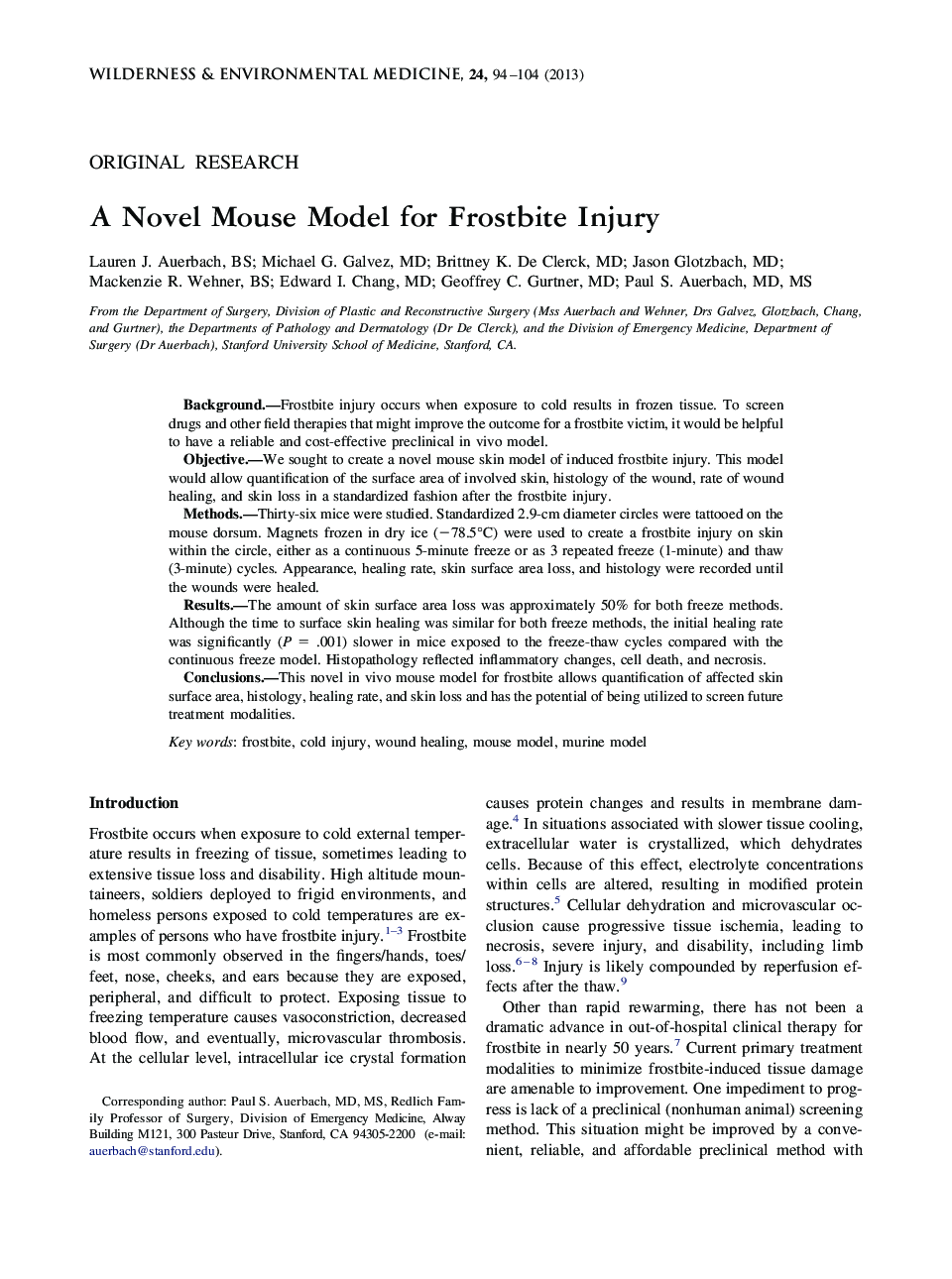| Article ID | Journal | Published Year | Pages | File Type |
|---|---|---|---|---|
| 2614872 | Wilderness & Environmental Medicine | 2013 | 11 Pages |
BackgroundFrostbite injury occurs when exposure to cold results in frozen tissue. To screen drugs and other field therapies that might improve the outcome for a frostbite victim, it would be helpful to have a reliable and cost-effective preclinical in vivo model.ObjectiveWe sought to create a novel mouse skin model of induced frostbite injury. This model would allow quantification of the surface area of involved skin, histology of the wound, rate of wound healing, and skin loss in a standardized fashion after the frostbite injury.MethodsThirty-six mice were studied. Standardized 2.9-cm diameter circles were tattooed on the mouse dorsum. Magnets frozen in dry ice (−78.5°C) were used to create a frostbite injury on skin within the circle, either as a continuous 5-minute freeze or as 3 repeated freeze (1-minute) and thaw (3-minute) cycles. Appearance, healing rate, skin surface area loss, and histology were recorded until the wounds were healed.ResultsThe amount of skin surface area loss was approximately 50% for both freeze methods. Although the time to surface skin healing was similar for both freeze methods, the initial healing rate was significantly (P = .001) slower in mice exposed to the freeze-thaw cycles compared with the continuous freeze model. Histopathology reflected inflammatory changes, cell death, and necrosis.ConclusionsThis novel in vivo mouse model for frostbite allows quantification of affected skin surface area, histology, healing rate, and skin loss and has the potential of being utilized to screen future treatment modalities.
